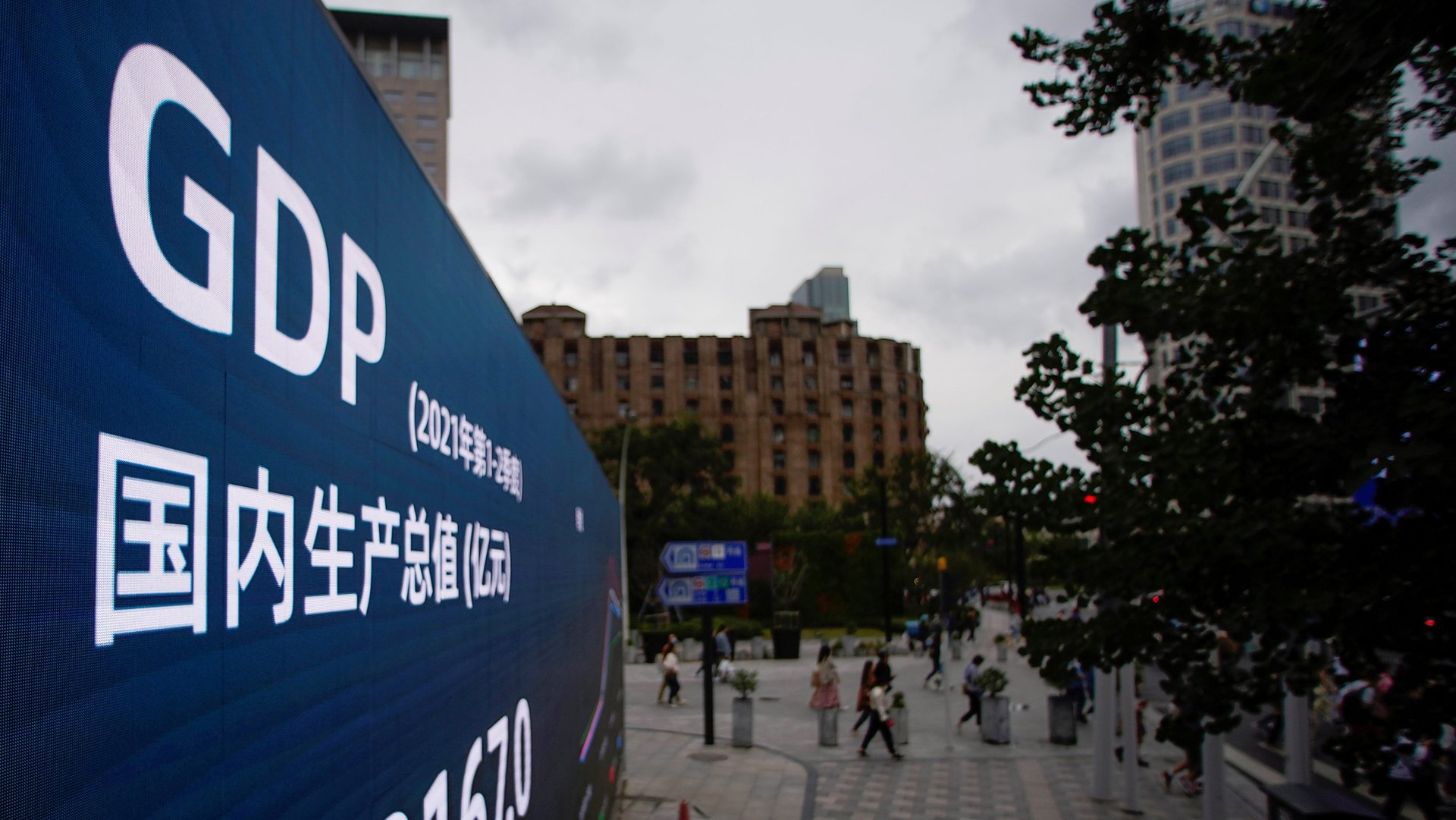Ten key questions for anyone worried about China’s economy (according to state media)
China’s government is well aware of growing concerns over its economy, to the extent that its core state media listed 10 questions to explain why the country is still doing fine.


China’s government is well aware of growing concerns over its economy, to the extent that its core state media listed 10 questions to explain why the country is still doing fine.
Although China’s post-pandemic economic recovery has been relatively steady thanks to strong exports, its third-quarter GDP growth of 4.9% was the slowest in a year. The economy is under pressure from the faltering property sector, new waves of coronavirus outbreaks, as well as a recent power crunch that halted the production of many factories.
In a lengthy commentary published on Sunday (Oct. 24), the Xinhua news agency said that overall, the Chinese economy remains”in the recovery trajectory.” The piece, which Xinhua said is based on interviews with “authoritative figures and government bodies,” is in response to “growing pessimism” from all sectors of society, and aims to strengthen confidence in the Chinese economy, wrote Qin Han, the chief analyst on fixed income at Chinese brokerage Guotai Junan Securities.
Here are the key questions, and summaries of Xinhua’s answers:
- What should we read into the current state of the Chinese economy? The economy is facing many challenges going into the fourth quarter, but it has the ability to maintain its recovery based on strong resilience that comes from the giant domestic market.
- How durable are consumption and investment? Policies for boosting consumption will be implemented soon, including further developing the rural market and helping the dining sector to recover. Several major provincial projects will help with investment growth.
- Can the momentum of foreign trade continue? Despite a possible slowdown in China’s exports and imports growth in the fourth quarter, major foreign trade firms in China still have sufficient orders for the first quarter of next year.
- How should we view supply-side structural reform? The reform, aimed at reducing excessive capacity in sectors like property, is seeing continued consolidation, with companies’ asset-to-debt ratios dropping.
- How should we deal with the issue of power shortages? China has pushed the prices of coal back to normal levels with government intervention, moving towards market-based pricing for coal-fired electricity.
- How does China seize the initiative as the global supply chain is restructured? China’s timely control of the coronavirus has maintained its attractiveness for foreign companies. It needs to accelerate the digitization of manufacturing, and resolve the issue of not having some cutting-edge technologies.
- What do we rely on to achieve “common prosperity?”The country needs to “divide the pie” better, through income distribution reform.
- What will China’s anti-monopoly crackdowns bring? The public has welcomed the regulatory moves, and more investments are starting to flow into sectors including new energy, advanced manufacturing, and industrial internet.
- How should we begin to revitalize rural areas? Provinces that were lifted from poverty will have a five-year transition period, during which they must maintain their support policies for local residents.
- How can we stick to the bottom line of preventing financial risks? The defaults of some individual property developers are singular cases, and the spillover risks to the financial system are controllable.